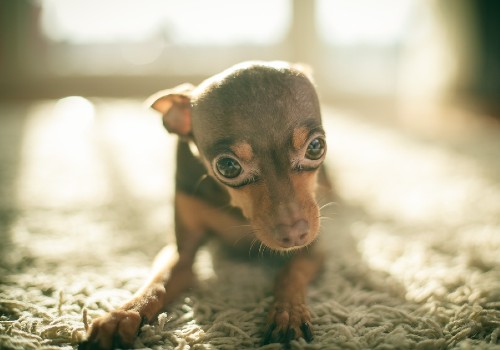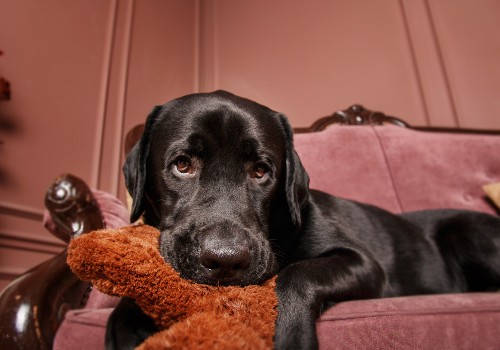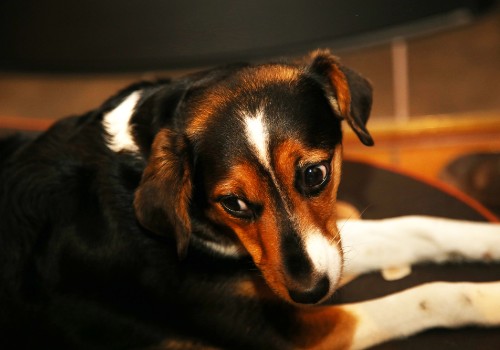Seeing your dog foam at the mouth can be a scary thing. Your mind jumps to the worst possible conclusion: somehow your dog has contracted rabies, and now there’s nothing you can do…
But take a deep breath and calm those nerves. Dogs foam at the mouth for many reasons and rabies is actually the least likely out of all of them.
So what’s causing all those bubbles of saliva in your dog’s mouth? And how can you tell if that foam is a sign of a more serious problem?
Let’s break down all the reasons why dogs foam at the mouth, from the benign to the concerning.
7 Reasons Why Dogs Foam at the Mouth
Physical Exertion and Vigorous Exercise
Ever gone for a run on a hot day and ended up with a mouth so full of saliva that it takes several spits to clear it out?
Well, the same thing happens to your dog when he exerts himself.
And the unique combination of excess dog drool and heavy airflow from panting causes great masses of bubbles to form.
The result: big globs of foam dripping from your dog’s mouth.
Some breeds, especially giant breeds, drool more than others, leading to more frequent, intense foaming. St. Bernards, Newfoundlands, bulldogs, bloodhounds, labs, Shar-Peis, and boxers are among these breeds.
But no matter what breed your dog is, foaming at the mouth during and immediately following exercise or play is nothing to be worried about. It’s a natural consequence of drool meeting air and indicates only that your dog is enjoying some physical activity.
Gross? You bet! Normal? Absolutely!
Stressful Situations and Anxiety Attacks

Stress and anxiety do strange things to your body, and that’s true no matter what species you belong to.
For humans and dogs alike, anxiety causes an increase in heart rate, which in turn necessitates more rapid breathing and panting. Combine that with hypersalivation — another symptom of canine anxiety — and what do you get?
Foam, and lots of it.
If you notice your dog foaming at the mouth while at rest, take a moment to examine the scene from his point of view. Chances are, you’ll spot a source of stress: loud noises, strange visitors, weird smells, or unfamiliar surroundings.
From there, you can either get rid of the stressor or move your dog to a more calming environment. Once you do, the foam should disappear in no time at all.
Having trouble determining whether stress is causing your dog to foam at the mouth? Examine him for other signs of anxiety such as a tense facial expression, trembling, pushed-back ears, wide eyes, and lip licking.
A Bad Taste in the Mouth
Sometimes a dog’s curiosity gets the better of him, and he tastes something he immediately regrets.
A stray drop of hot sauce from your taco, a bit of shampoo during his bath, the foul medicine you make him swallow, that ultra-expensive dog food you just bought… whatever it was, it tasted horrible, and he needs his mouth cleared out, stat.
Thankfully, he has a built-in mechanism for doing just that. His saliva glands jump into high gear and produce as much drool as they can in hopes of capturing that awful taste and transporting it out of his mouth.
And remember the foam formula: lots of drool plus lots of breathing equals lots of foam.
Like dish soap suds carrying bits of oil off your dinner plate, those foam bubbles carry the nasty flavor particles off your dog’s tongue and onto the floor. Yep, they’re your problem now — but give him some water and maybe a treat as a palate cleanser and the foaming should stop.
Nausea, Motion Sickness or Stomachache

When you’re feeling queasy and your mouth fills up with saliva, you know it’s time to head to the bathroom. That extra spit usually means that your body is preparing to rid itself of whatever made it sick, and vomit is the best way to do so.
In this sense, dogs aren’t so different from us. Nausea provokes the same physiological response in them as it does in us.
And because dogs tend to pant when they’re nauseous, air mixes with all that saliva to create foam.
Anything from a bumpy car ride to a stomach bug to a feast from the garbage can cause your dog to become nauseous. To determine if the foam is nausea-related, look for symptoms like dry heaving, lethargy or a lack of appetite.
Most of the time, nausea passes quickly, and once it does, the foaming should subside.
But if your dog is nauseous repeatedly or for prolonged periods of time, see a vet — it may be something more serious than a suboptimal snack.
Tooth, Gum or Tongue Disease
Very few people would describe the inside of a dog’s mouth as pleasant, even at its healthiest.
But throw in some dental disease and you’ve got a recipe for some truly gross sights and smells — with a side of foam.
Whether he’s got a cavity, gingivitis, or another type of dental disease, your dog is experiencing pain in his mouth. As much as 80% of adult dogs have some form of active dental disease, so he’s not alone, but that doesn’t make the inflammation and infection hurt any less!
To avoid contact with the painful area, your dog may hold his mouth open and keep his tongue positioned to one side. Mouth breathing leads to excessive drool, which froths up the more he pants.
If your dog’s tongue is injured or infected, he may exhibit the same behaviors in an attempt to reduce the pain.
Foam that’s accompanied by a reluctance to eat or drink, swollen gums, or bad breath is a sign of dental disease. See a vet as soon as possible — the earlier you catch the disease, the easier it is to treat.
Seizures or Other Neurological Illness

Neurological disorders, including seizure disorders, can cause all manner of scary physiological symptoms.
Convulsions are the classic seizure symptom, caused by the brain firing off rapid, uncontrolled signals to all of your dog’s muscles. But those signals also go to your dog’s saliva glands, causing them to produce high amounts of drool.
And that drool, of course, turns into foam when it mixes with air from heavy breathing (which often occurs during a seizure).
If your dog is foaming at the mouth due to a seizure, you’ll know it. He may fall over, twitch or jerk uncontrollably, and lose control of his bladder and bowels.
Some seizures are precipitated by warning signs like confusion, muscle contractions, and anxiety with no apparent cause. Excessive drool and foam can also indicate that a seizure is about to occur.
Certain breeds like labs, golden retrievers, and beagles are more susceptible to seizures. Head injuries, ingestion of poison, cancer, strokes, liver disease, and kidney disease can also cause seizures.
If your dog is having a seizure, carefully move him to a spacious, padded area where he won’t bang into things and hurt himself. Keep clear of his mouth, as he may chomp uncontrollably due to the spasms, and record a video if possible to show to your vet.
Then seek medical attention as soon as possible. Your vet will perform bloodwork and scans to identify the cause of the seizure and provide appropriate treatment.
Rabies
Though it’s the least likely cause of foaming at the mouth, we’d be remiss if we didn’t discuss rabies as a potential explanation for a dog’s frothy drool.
Most municipalities, vets, and kennels require pet dogs to receive regular rabies vaccinations. These vaccines are highly effective, so if you’re a responsible dog owner, it’s extremely unlikely that your dog is foaming at the mouth because of rabies.
However, if you see a stray or feral dog foaming at the mouth, it’s a different story.
Rabies wreaks havoc on a dog’s nervous system, causing him to move erratically, making him nervous or aggressive, and preventing him from swallowing.
Since he can’t swallow, all that drool he produces has nowhere to go but out through the mouth. And since his agitated state makes him pant, the drool quickly turns into foam that drips constantly from the mouth and tongue.
This is all very convenient for the rabies virus, which spreads through saliva. An aggressive, agitated dog is much more likely to bite, and once he does, the rabies virus is transmitted to its new victim.
Never approach a strange dog that is foaming at the mouth, especially if you notice the dog moving or acting strangely. Instead, call animal control immediately and notify them of a potentially rabid dog on the loose.
If you or your dog are bitten by an animal (especially a skunk, raccoon, fox, or coyote) that is foaming at the mouth or displaying other symptoms of rabies, get emergency medical help immediately. The same applies if you or your dog have been in the same room like a bat, whether or not you’ve had any contact with the bat.
A course of rabies vaccinations administered quickly can stop the virus from taking hold in the body. However, it is imperative that the vaccines be given before any symptoms appear — once you notice foaming at the mouth, it is too late to treat rabies and death will ensue.

rabies sound so horrible… please vaccinate your dog!